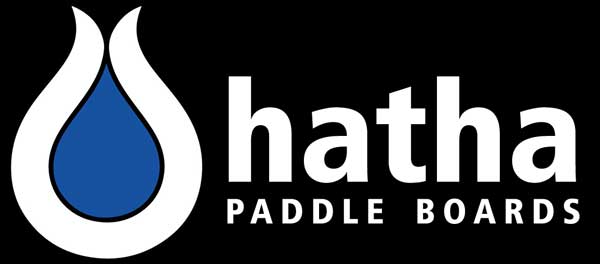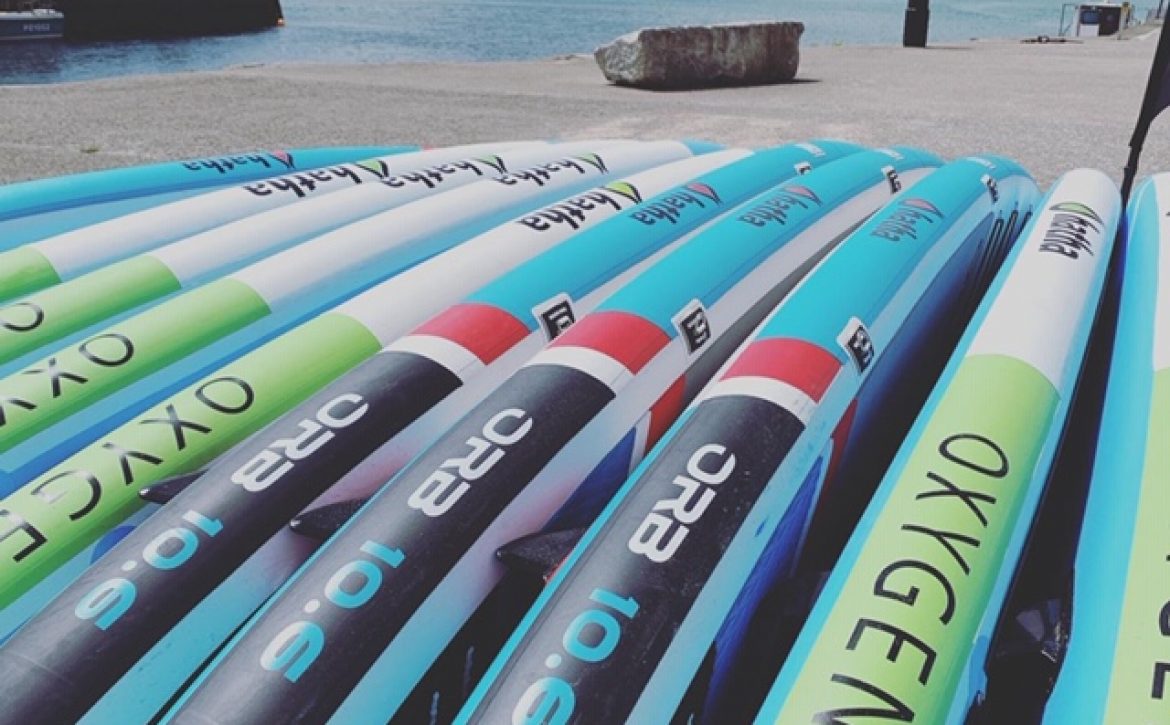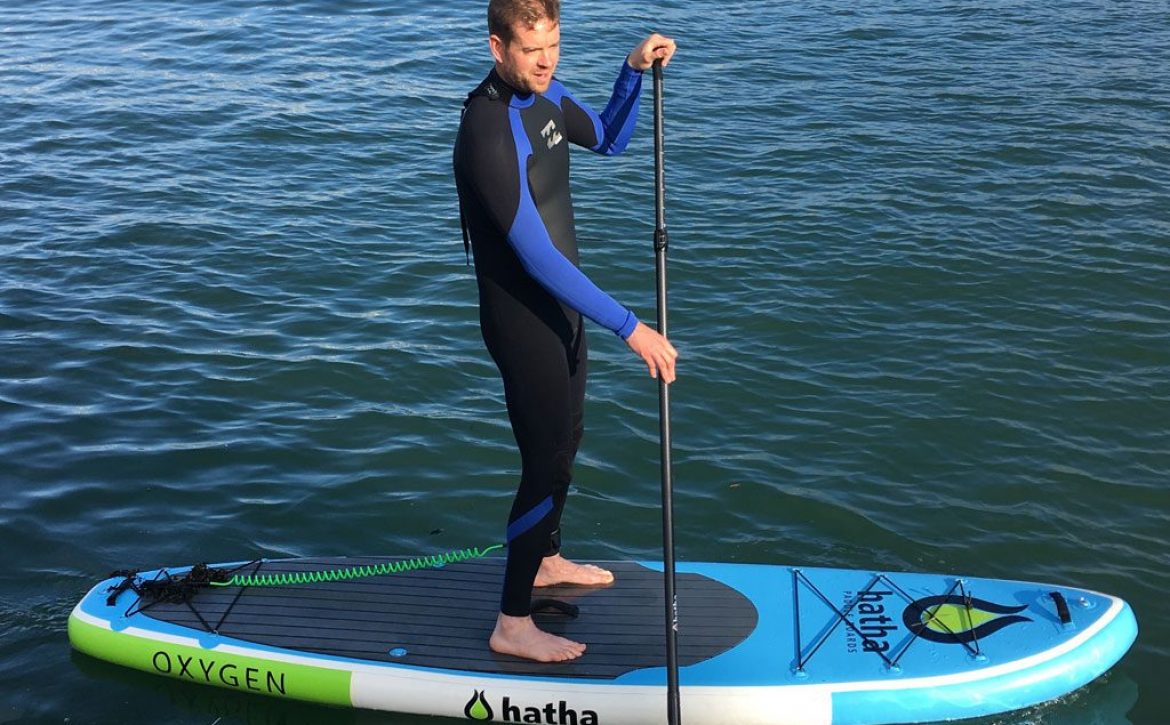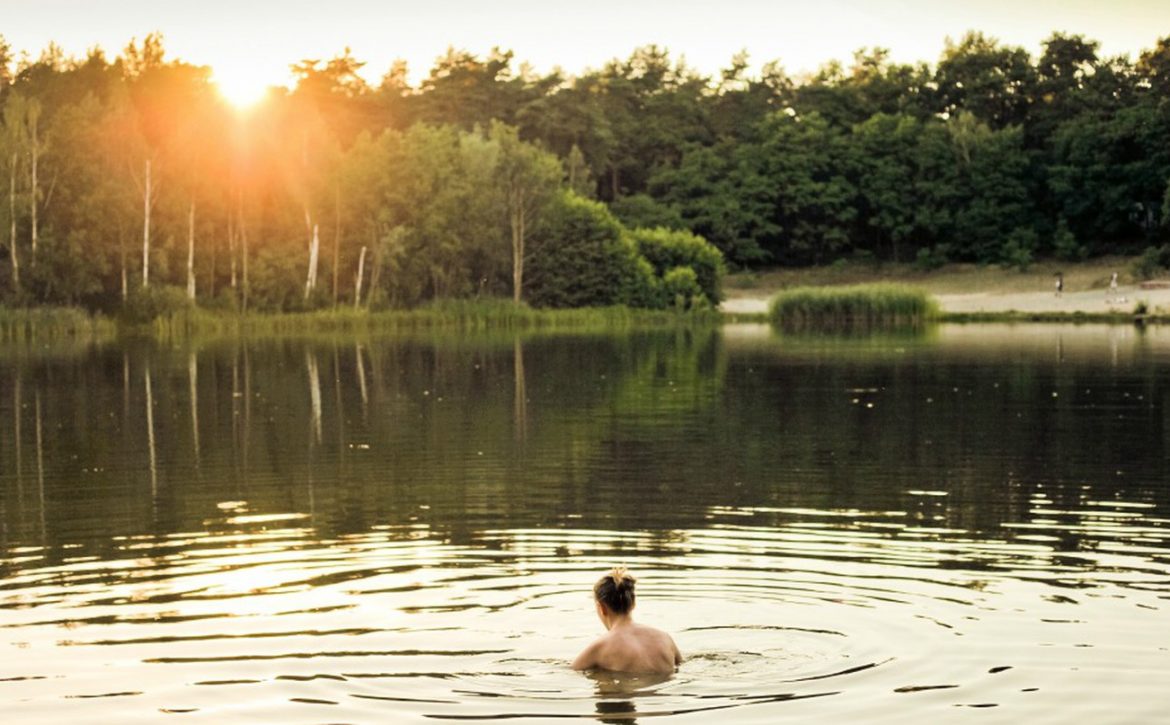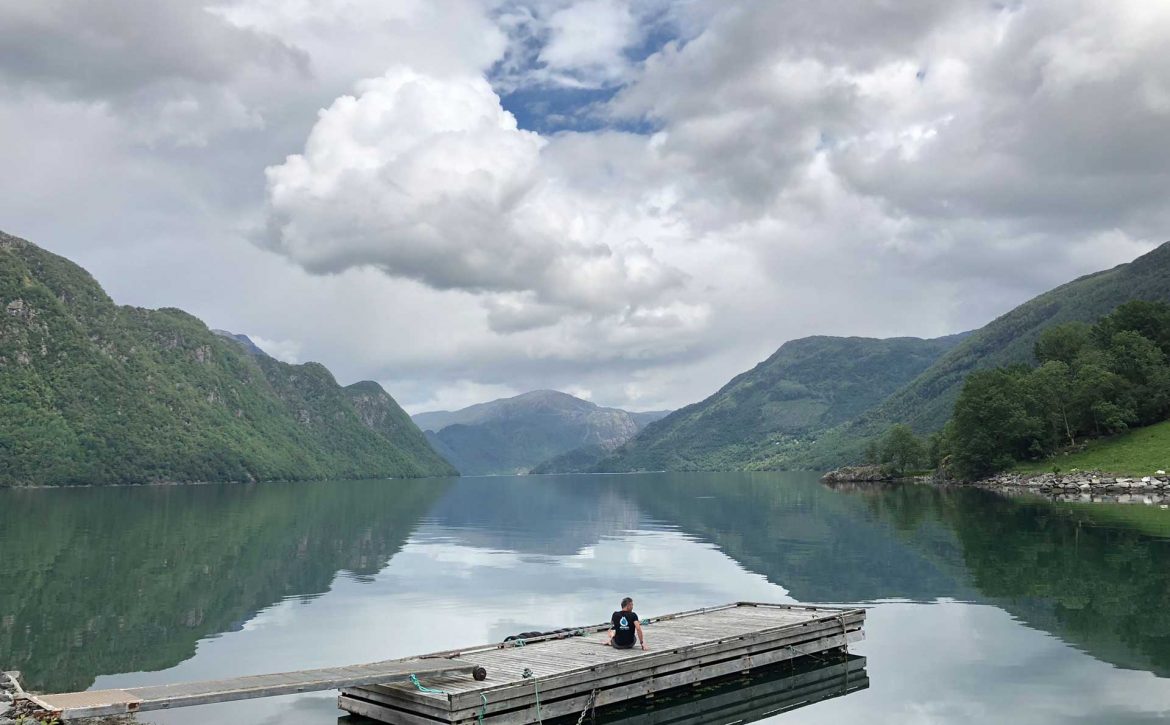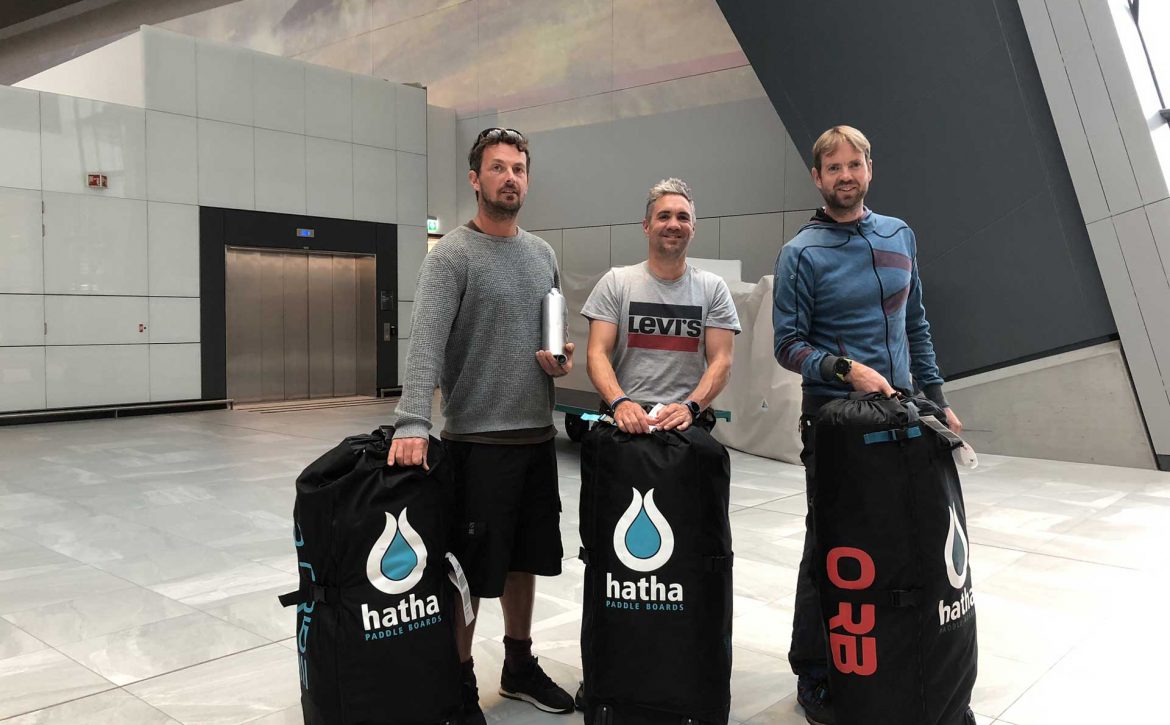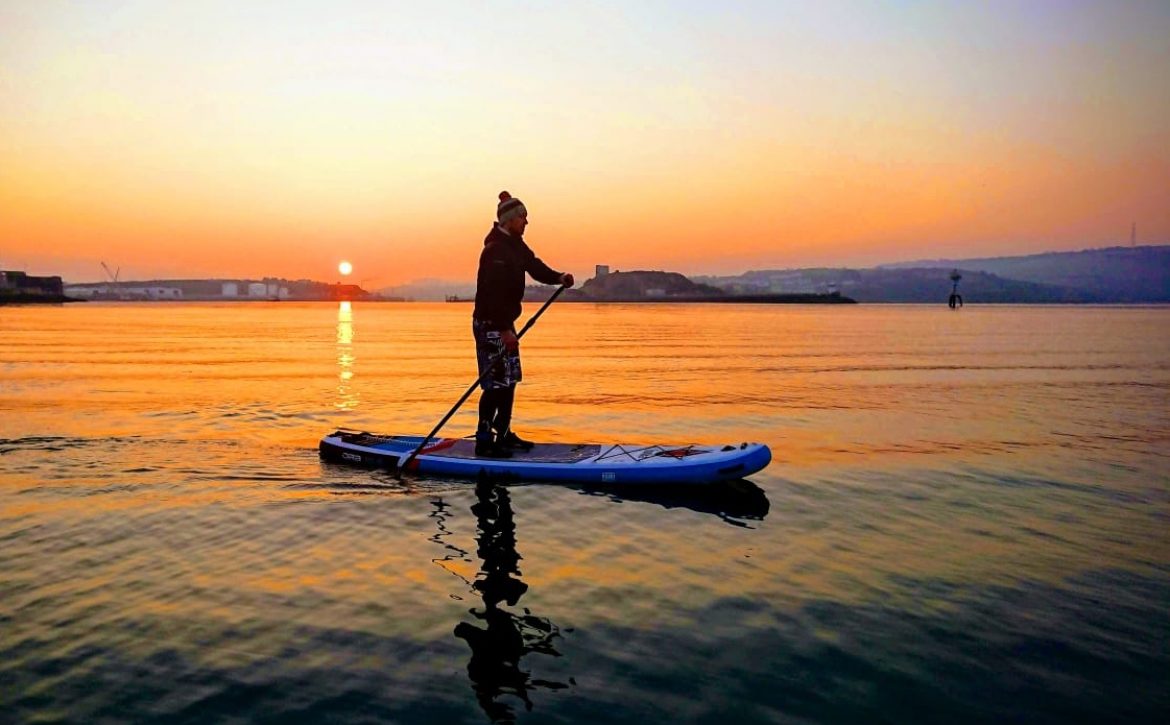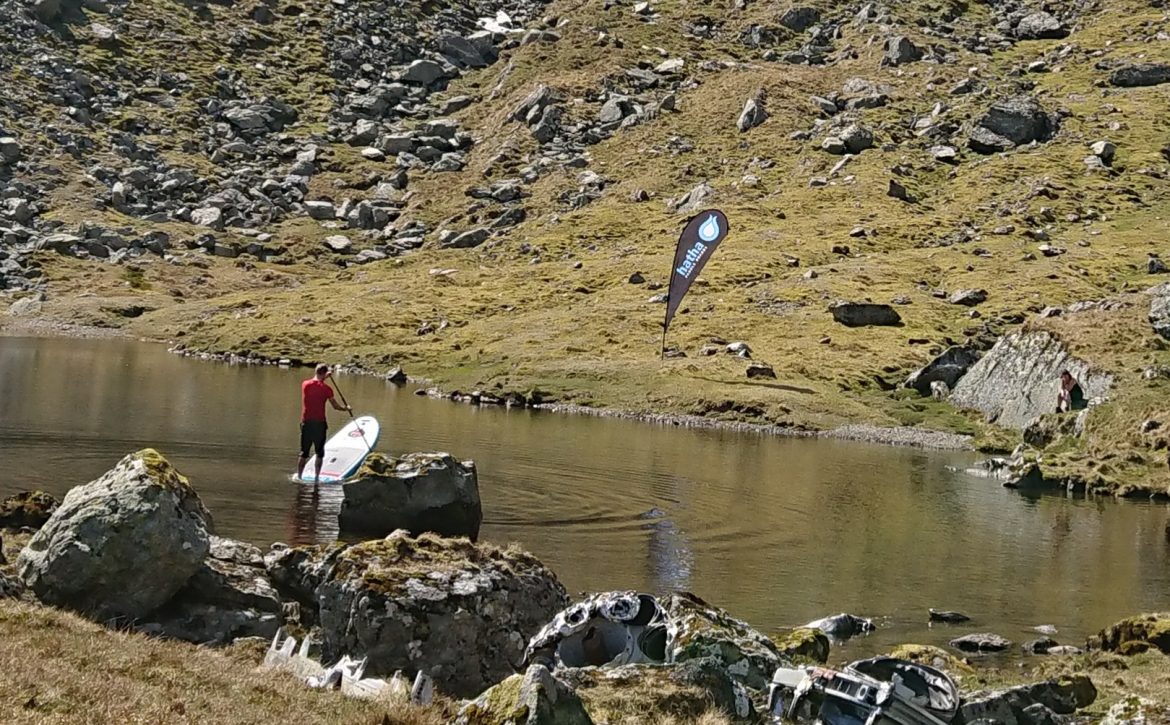Category: Business
Setting up a paddle-board school or want some trade discount?
Hatha has been providing outdoor centres, schools, scout groups and hire centres with boards and equipment since 2013. No matter how big or small, if you need some boards please get in contact with us. If you are an individual wanting our support then we may be able to help! Numbers – We are happy to quote from 1+ boards, so if you a private paddleboard coach that takes a limited number of people on the water please don’t feel that you are too small to qualify for our Trade prices, we want to get everyone the best deals possible to get you and your customers out on the water.

We regularly supply larger orders to Outdoor Pursuits centres, Lakes and reservoir trusts, land based Scout groups and also Sea Scout troops. There has been a large increase of surf schools also buying fleets of SUP’s for when the surf is flat. It’s having another option for when there isn’t a wave, keeps your customer rather than postponing or cancelling bookings.
In the past 2 years we have seen a massive increase in private instruction, there has been a boom in individuals wanted to get qualified and begin teaching paddle boarding. There are a few courses now available. The main two providers are the British Stand Up Paddle boarding Association and the Academy of Surfing. Here is some more information on the two main providers –
BSUPA Level 1 Ready to Ride
The BSUPA Level 1 “Ready to Ride” course is aimed at adults who have never stand up paddled before or people who have had a go but want to learn the basics properly.
Learning to paddleboard is a fast and fun process with a qualified BSUPA Instructor and BSUPA approved SUP school. The course structure is designed to give you the information you need to get on the water safely, have fun and learn the basic techniques of paddle boarding.
BSUPA Level 2 Ready to Tour Teaching Scheme
The Aim of this course is to introduce people to the enjoyment of touring and exploring but offer more than an experience. Having completed this course students should feel that they are ready to plan their own adventures and have new skills to improve their time on the water.
The course is ‘skill and knowledge focussed’ aiming to give students a safe way of getting more time on the water.
By the end of this course paddlers should be able to
- Understand the different locations to paddle and their restrictions, challenges
- Have knowledge of different touring disciplines and how to get involved
- Be able to select the best touring equipment for themselves
- Can demonstrate an improved efficient paddle stroke
- Can use a variety of strokes to maintain tracking and manoeuvrability on the water.
- Can navigate obstacles and third parties afloat taking into account, flow, weather and any other elements.
- Have knowledge of how to plan a trip taking into account weather, flow, tide, access, 3rd parties, exit options,
- Have understanding of personal gear you might take with you when touring. Have planned completed and experienced a tour.
The Academy of Surfing
- Level 1 SUP Instructor (Enclosed Flat Water)
This is the entry level course for SUP instructors where you provide basic SUP lessons, short SUP paddle tours and SUP rentals in enclosed flat water locations. It covers basic instruction techniques, equipment and operations, planning and conducting SUP sessions, risk management and safely managing groups of students.
BONUS: A personal SUP Paddling Video Assessment with review is included in the workshop course, so you can assess your own paddling technique.
On successful completion of this course, instructors are eligible to enrol in the ASI Level 1 SUP Technical Coach (Enclosed Flat Water) course
Aim:
Plan and conduct basic stand up paddle sessions, short SUP paddle tours and SUP rentals and manage clients safely in enclosed flat water locations.
Locations:
- Enclosed Flat Water locations are defined as:
- inland waterways and bodies of water including creeks, rivers, lakes, lagoons, estuaries, canals
- no wider than 1 km (0.6 miles)
- with no swell or breaking waves
- wind speed less than 12 knots
- water depth no less than 3ft
- free from hazards
- no more than 250 metres from shore
Career Outcomes:
- Stand Up Paddle Instructor in the SUP or outdoor recreation industry.
- Industry job roles that require SUP knowledge (e.g. marketing, sales, retail)
Topics Covered:
- The role of the SUP instructor
- Identify laws and regulations that apply to conducting SUP lessons
- Identify enclosed flat water SUP lesson/activity risks and hazards
- Emergency processes and response
- Logistics and how to plan enclosed flat water SUP sessions
- Suitable boards, equipment and resources
- Communication skills for the SUP environment
- Methods to manage clients safely
- Deliver basic SUP lessons and SUP activities
- Understand correct paddling technique including the 5 phases of the paddle stroke
- Identify correct and incorrect technique using ASI assessment competency guide
- Use video analysis to assess your own paddling ability
- Evaluate your own SUP sessions
- Minimise environmental impacts (social & natural)
Entry Requirements:
- Before starting this course, you must:
- Have completed a minimum of 40 hours on water paddling
- Paddle with basic paddling technique, confidence and safety in enclosed flat water locations and demonstrate: paddle with the board in trim / change hands correctly / basic posture with back straight and eyes looking ahead / correct reach / paddle vertical at entry / feathering paddle at exit / paddle in a straight line / turn and stop effectively
- English speaking skills equivalent to IELTS 6 (Competent user: Generally you have an effective command of the language despite some inaccuracies, inappropriate usage and misunderstandings. You can use and understand fairly complex language, particularly in familiar situations.)

So when is it best to place your order?
It all depends on when you want to start. In the UK the outdoor centres start preparing and getting their equipment ready in February in anticipation to starting lessons in March. Private hires and private tuition is usually a little later in the season. Some centres and locations are teaching all year round.
It’s best to place your order with us as early as possible, if we know what you want and in what quantities we can assure that we will have it ready and waiting to be shipped out in time. We place our factory orders for the year in November- December time; this ensures we will have the stock with us at the warehouse at the end of February. It’s best for us if we know as early as possible. We do hold a large amount of stock but knowing in advance would eliminate running out of stock.
Costs – We don’t have a set trade price. It really does depend on quantities and which boards that you require and when you need them. More often than not the more boards you buy the better discount we can offer. Another factor that we can discuss is collaboration, so exchanging social posts working with us as a form of ambassador. Again this would be open to discussion and negotiation, we are always open to suggestions.
These are some of the groups, companies and indivduals that we have supplied in the past –
Colleges
Student union groups
Beach hire
Swimming pools
University groups
Scout groups
Sea Scout Groups
Outdoor centres
Shops and retail
Private Coaches and Instructors
Individual groups such as team padding for charity or an event
Individuals padding for charity or for other reasons
Schools and students

This list is to give you a guide, if you’re not sure or would like more advice on trade prices or collaborations then please drop us an email at dan@hathaboards.co.uk or call 07739564702
Wetsuit’s the basics – Which suit shall I buy?

Wetsuits – the basics explained!
There are two main types of wetsuits, open cell and closed cell, which one will I need?
The closed cell wetsuit has been designed for surfing and most on the water sports. It’s a “hydrdynamic” style suit. These usually have a chest or back zipped. It’s the same construction as you would also find in a triathlon or swimming wetsuit. A closed cell wetsuit would allow too much water in for diving; it will make you cold a lot quicker.
For diving an open celled wetsuit is best. This provides suction between the skin and suit that’s nearly watertight. While they are a difficult to get in and out of (If you use a little eco-friendly dish soap and it will be much easier), they keep you much warmer and allow for much greater flexibility underwater.
Wetsuit design is always progressing, mainly the zipper positions and also adding more flex to the neoprene. Gul wetsuits use a technology called X-Flex, Ripcurl use 100% Superstretch neoprene or Flex energy in some of their newer suits. Xcel use Channel Flex. They are all very similar and do the same thing, make your suit stretchy.

What kind of zip should I get? There are 3 main versions, back-zip, Chest-zip and Zipper less.
Back-zip – Back-zip wetsuits were the fist on the market and are almost always the cheaper option of the three. They’re great for swimming/surfing in warmer waters on summer or late spring, but they are not the best option in colder waters. The main disadvantage is that they let in too much water in through the zip.
Chest-zip suit – Chest-zip wetsuits tend to keep you warmer as the zip is smaller so less space to let the water in. There is usually an inner layer, sometimes with a section that doubles around the neck for extra warmth. They can sometimes be harder to get on and off but the advance of Flex suits helps to make this much easier.
Zipperless Suits – Brands such as O’neill with their Hyperfreak models boast suits without zippers, they’re great as they minimalism the joins, which equates to less leaks. These are the most expensive suit out of the 3 and can sometimes be really tricky to get on and off.
Now you’ve chosen your suit, what thickness will you need?
Wetsuit thickness is measured in millimetres. The main focus on the warmth is around your middle near your kidneys, your core so usually the body thickness is greater on the body. The legs and arms are usually that bit thinner so you can still move around. Some brands add more flex to the elbows and knees. In warm conditions a 2/2 wetsuit would be sufficient, a 3/2 for spring-autumn and 4/3/2 or 5/3 for winter conditions. This is a guide only, it really does depend on the conditions and location.
In extreme or freezing conditions you will need to look a thicker suit –
6/5-or 6/5/4. There are also 7/6- and 7/6/5 mm wetsuits, but the thicker you go the more restrictive they become. A good 6/5 or 6/5/4 with hood, boots, and gloves will usually suffice.

Lets have a quick look at the seams and the stitching
Overlock Stitching – This is the most common and standard stitching. The downside on this cheaper version is that it does allow water to seam in.
Flat Stitching – This is simply stitching made on an overlocker machine so the seams are flat on both sides.
Blind Stitching – This is a narrower style of stitching that flat stitching, the seams are usually glued first, they’re great at keeping the water out.
Sealed, taped and glued – this is exactly what it says, the seams are sealed tight, a taped is applied.
Liquid seamed – this is the best type of seal on a suit. A liquid rubber is applied to seal the joins gives a water tight finish.
The best spots to swim wild in the UK!

Granchester Meadows, Cambridgeshire
The River Cam, Granchester hasn’t changed little since Edwardian times. Made famous by Rupert Brooke and Virginia Woolfe others when they camped, picnicked and swam in the river. On a Summers day the Orchard Tea Gardens are fantastic and along the meadows is a particularly pleasant place to swim. Some spots deepen to 1.8 meters (6ft)
Snowdonia’s stunning tarns
Tarns – or llyns as they’re known to the locals! These are the lakes near the tops of the mountain. The Rhinog Range has more tarns per square meter than anywhere else in Wales. If you get u early or go out of season they can be extremely isolated giving the feeling of being in another world. The back drops can be amazing. There are a few that are that close to the edge they look like infinity pools.
Waterfall Woods in the Breacon Beacons, Wales
The name says it all. This section of river is packed with natural pools and small waterfalls. It can be found 20 minutes along the woodland trail from Pontneddfechan. When you reach a flat outcrop on the right, just above a mini canyon you will see the river below you. Further along the track is a large junction pool, just beneath the footbridge. Sgwd Gwladys, or Lady Falls, occupies a giant amphitheatre rimmed with a lip of dark black gritstone. This is one of the most stunning waterfalls in Wales!
River Avon, Claverton weir
Along the valley of the Avon is a stretch of approximately 100 metres of deep water patches and shallow paddling areas. The water is crystal clear in the Summer and its quite easy to get to. Follow the A36 for about 3km towards the Claverton Hamle and turn left down Ferry Lane. Simply walk to the bottom and across the big field, the weir will be on your right.
The Cheviouts, Northumberland
This is very popular with walkers and families to col off in the Summer, it’s an easy location to get to. It has the famous Linhope Spout which is high shoot that falls into a round and very deep plunge pool. There is a high jump into the pool, go careful as the water depths do change depending on the season.

River Ouse, Yorkshire
The River Ouse, which winds through the Sussex Downs is set in the most idliic location. It’s the perfect place for swimming, relaxing and having a picnic. You can stop for lunch at Barcombe Mill or head a little further up river to the riverside Anchor Inn. There are even some paddle boats that you can hire. The only building you will see on the entire journey will be the spire of Isfield Church.
.Skye’s faerie pools, Scotland
The Faerie Pools on the Isle of Skye lays in a sheltered glade of red rowans and ancient rock. The Black Culin rise above the Gaudi Spires, the remains of a massive volcano. You may see a pink look about the water, this is from the quartz in the rock, it can seem to glow on occasions.
Mourne Mountains, Northern Ireland
Lough Shannagh, County Down, is a wide open loch surrounded by the magnificent Mourne Mountains. About 30 minutes walk from the road brings you to the edge of the lake. It is is framed by several peaks, including Slieve Doan and Slieve Loughshannagh. The water is crystal blue and refreshingly cold. There is also a small beach area for the children to play in.

River Dart, Devon
The River Dart, which runs through the Dartmoor National Park, Devon, is the setting for Charles Kingsley’s The Water Babies. This is one of the best spots in the UK for wild swimming. There are so many pools, rivers and small lakes (tarns) to find and explore. We will be adding another blog soon just on our favourite Dartmoor spots. Some to get your started in the Dart, the East Dart and also the West Dart. If you do your research you may even find some natural water slides!
What is wild swimming?

What is wild swimming?
Wild swimming is all about swimming in natural spaces, the great outdoors! Whether it’s a lake, river, or the sea, seek and embrace nature. There are also some fantastic sea pools and outdoor lidos to explore!
Is wild swimming safe?
Yes, as long as you’re sensible and take note of a few basic rules. Always go with a friend, be sensible and wear the appropriate clothing for the conditions.

How to stay safe wild swimming
Open water is usually cold and can be deep in places, the deeper it is the less chance the sun has to warm it. The top of the water may seem warm but the deeper you go the colder it usually gets. Urban locations have offer hazards such as broken bottles shopping trolleys etc. Always be sure you can get in and out of the water easily. Some river banks are very steep and deep on the edges so plan your entries and exits.
Checking the current
Some rivers may have a flow to them, you can usually tell by looking at the surface, it may seem quite gentle but you can soon travel quite a distance in a short time. The flow will also be affected dramatically by the amount of rain we have just had. Never think that as you’ve been to this spot once it will be the same again, the water depth and flow can dramatically in a just a few hours after heavy rain.
How deep is the water
You should never dive straight in to any outdoor water source unless check well prior. Even clear water can be deceiving, it may look deep but distance in water can often be misleading. Always know the depth. Rivers also have pools and varying sections, some pools could be really deep when a narrow shoot could be only inches deep. Just because the water is dark/black doesn’t mean its deep, the colour can be misleading. Always check the depth, use a stick or climb in slowly first pushing down with you feet to check.
Don’t underestimate the cold
Even in the summer the water can be freezing below the surface, just because it’s hot outside doesn’t mean the water will be. Hypothermia happens gradually and most of the time it creeps up on you. You can make you feel tired and lethargic rather than freezing cold.
How to get use to the water and avoid cold water shock
Cold water shock can be fatal so even if you’re wearing a wetsuit it’s better not to jump straight in get use to the water first, there’s no rush to dive in. Give yourself time to adjust to the temperature, stand in the water for a few moments to get use to it, get your body ready for the change in temperature. A good tip is to splash water on your face and the back of your neck first or once in the water dip your head under to get use to the cold.
Don’t swim alone
Avoid swimming alone if possible. It’s always best to be in the water with someone or have someone on the bank that can help if needed. There are also some great floats available, you can tow these behind you as you swim. They are usually bright and can be seen easily from the side or from a boat. Another good tip is wearing a bright swim hat.
Watch out for trees and reeds
Trees and reeds can not only be annoying they can also be dangerous. They are a bit like an iceberg, you can usually only see the tip of a branch sticking out of the water, there be a whole tree under there! If possible avoid swimming through reed and over tree branches.
Cuts and grazes
Always cover up nicks and scratches with a good quality water resistant plaster. In some urban locations Weil’s disease (leptospirosis) is apparent which is from rats urine, it can seep into open cuts and wounds.
Stay Close and avoid the cramp
Getting cramp is not a pleasant experience and is always when you don’t expect it. The main cause is from dehydration so make sure how drink plenty well before head for the water, small regular amounts rather than a large amounts a short time before you go works best.
How to choose somewhere to go wild swimming
The internet is the best place to start looking, try searching for wild swimming near where you live first.
Another great starting point is the www.outdoorswimmingsociety.com they have heaps or information, tips, locations, ideas and spots to visit. There are also some great wild swimming apps to download to you phone.
These are some of our favourite books –
Wild Swim, by Kate Rew; Wild Swimming by Daniel Start; and Wild Swimming: Hidden Beaches, also by Daniel Start. All three of these have swim spots listed all over the UK and detailed maps or OS references and directions!
For more regional info try Wild Swimming Walks (Dartmoor and South Devon) by Sophie Pierce and Matt Newbury; and Wild Swimming Walks (London) by Margaret Dickinson.
Getting connected
If you’re on Face Book why not join the Outdoor Swimming Society, with over 25,000 members in the UK and its free to join, why not!
So what to wear
A woolly hat or beanie is great to keeping in the warm, that is if you don’t plan on getting your head wet. There are also some great skull type caps available.
A wetsuit or triathlon type suit is also really good to keep the cold out. You can also buy just a wetsuit top. We have another blog on wetsuit types, thickness etc
Wetsuit boots or water type shoes are also a good idea. These not only keep you feet warm they will prevent any injuries.
Neoprene gloves are also great to keep the chill out.
If you’re planning on going under water or swimming a distance then goggles are great piece of kit. It’s sometimes overlooked in wild swimming. Standard swimming pool goggles will suffice.
Ear plugs
To avoid water going in your ears and also to prevent infection ear plugs are really useful. Some of the best makes are for surfing, EQ seals, Surfers Ear or G-plugs are some of the best.

Wild swimming on Dartmoor

Shilley Pool, near Okehampton
Its one of Dartmoor’s best kept in the wild swimming community. It can be found just below Blackaton Brook which feeds the tarn, It was featured in Roger Deakins timeless book, waterlog, which gives it its cult type status amongst wild swimmers. If you haven’t read the book it’s a must.
It’s a little tricky to find as its It is off the beaten track. Beware of unsteady ground as they may be peat bogs, particularly in the area known as Raybarrow Pool which carries the infamous reputation as one of Dartmoor’s most dangerous mires. For that reason, please plan your route and try to stick to an obvious path as much as you can.
Haytor Quarry Pools, near Bovey Tracey
Haytor Quarry finds itself in the most picturesque location, surrounded by sweeping hills lands and ancient footpaths. With its naturally rock sides keeps the pool out of the wind making it a great spot in the colder months. It does have some deep sections that may feel quite cold, so be careful and get us to the waters temperature before you take the plunge.
Sharrah Pool, near Poundsgate
This spot is simply beautiful and really easy to get to. Head to the nearest car park by the bridge and walk upstream along the obvious path to the left or the river.
This can become quite busy in warmer months as its quite easy to reach from Plymouth and Exeter so head out early if possible. Beacause of its easy access it doen prove popular with dog walkers and ramblers. That said it is definitely one for your list. The water is ice cold and crystal clear, the small rapids and drops makes it a fun spot for all the family. It is set deep in the heart of the woods, its steep rocky and tree strewn sides it can give the impression that your in a set from Lord of the Rings.
Spitchwick Common, near Ashburton
The waters of Spitchwick Common, also known as Deeper Marsh remain one of Dartmoor’s most cherished wild swimming locations. This is still the river Dart and is best just downstream of the Dart Gorge. It is close to Spitchwick Manor and the historic grounds of Buckfast Abbey. The town of Ashburton is also worth a visit for a cream tea. This is known as the gateway to Dartmoor!
Salmon Leaps, near Chagford
Based on the banks of the River Teign, to the West of Dartmoor. It is situated at the foot of Castle Drogo now owned by the National Trust. If you have time take a walk around the castle grounds, the views from here are very dramatic. If you follow the trail down to the river from the main car park you may even find the Fingle Bridge Inn on your way. You may need a wetsuit if you fancied sliding between the series of small pools in the river.
Cullever Steps Pool, Belstone, North West of Dartmoor
A short drive from the A30 who will find the picturesque village called Belstone. Here you will find the Cullever steps. This is one of the smaller pools on our list but still well worth the trip. Not far from the pool is the charming village of Belstone where you’ll find the Tors Inn, a very quaint and homely Inn.
Cowsic Waterfall Pool, Two Bridges
This is one of our favourite spots, as we only live a stones throw away. It is set near the ancient and mystical Wistman’s Woods. You can park opposite the Two Bridges Inn, and follow the track which runs alongside the Cowsic River. Follow this upstream, towards Beardown Farm. You may need to scramble down to the waters edge, so please be careful if you have small children or dogs with you.
Foggintor Quarry
One of the easiest places to walk into, it’s on the edge of Princetown on the road heading back to Tavistock. You will need to park near the road and follow the wide track (suitable for off-road vehicles but unfortunately it can be used as its private) inland for a short distance before you reach the quarry on your left. It does get quite foggy here, hence the name but that adds to the ambience. Please note that the quarry is very deep and the water is very dark so go careful getting in.
This is a Microgap
We are super stoked that Visit England have used our boards in their latest promotional video to show what England has to offer! Its all about the Microgap!
So what is a microgap……
Visit England state, “Pack the best bits of a gap year into just a few days with a Microgap in the UK. Whether you like to Switch Off, Give Back, Learn More or Go Wild on your break, a Microgap can provide exactly what you’re looking for. See where your next trip can take you! So what are your options….
Switch Off – Everybody needs to hit pause on everyday routine every now and again. Unwind, reflect and focus on yourself; Switch Off on a Microgap.
Learn More – Get hands on and master a new skill or improve an already existing one; find your passion when you learn more on a Microgap.
Go Wild – There’s nothing quite like the exhilaration that comes with pushing yourself to the limit; discover amazing views and breathtaking experiences when you Go Wild on a Microgap.
Give Back – Do something positive and create unforgettable memories at the same time; improve the world around you and Give Back on a Microgap.
Taking your paddle board on an airline?
Why not take your paddle board on holiday with you, it’s easier than you think! We headed off to Norway in June 2019 and we all took our isup’s with us. We flew with Norwegian Airlines from Gatwick landing in Bergen. We booked our flights online and had a few options for our luggage. We went with having 20 kg of hold with a small day bag to take into overhead storage. This option also allowed us to each take a personal item, from a laptop, to a drone.
The Stride weighs approximately 14-15 kg in the bag. Which gave us at least 5 kg to play with. As their was four of us we took only 2 pumps, one spare paddle and 2 spare fins, just in case. The rest of the weight and room we used to take personal items and team items such as a Jetboil, food, torches etc.
We then used our sleeping bags, towels and other clothes to pack around the board to avoid any damage. We put spare trainers over the ends of the paddles just in case. It was all stuff that we had to take so why not use it wisely.
The wheeled bags that come as standard with the Orb and Stride made it really easy to get about in the airport. These bags also have rucksack straps and waist belts but they can be easily tucked into the rear Velcro compartment to keep them out of the way of the conveyor belts.
Once at Gatwick we were asked to register and load the boards into the oversized area, which was really easy…. no queues.
All of our kit arrived there and back safely and the whole process was really easy! Norwegian Airlines were amazing!
If you do want any info on how to travel with your board or even about travelling around Norway please do send us an email or give us a call!
Is it worth getting up early for a paddle?

Back in March 2019, we were having a few good days of weather, cold in the mornings but heating up nicely through the day. We made the decision to go for an early paddle and watch the sun rise. This all sounds good until you start to look at the sunrise times and what time you need to meet up, what time to get on the water ready for the sun to rise.

We met at 0510 am, so a 04.30 am wake up. Now I really do love my bed and it doesn’t take much for me to make little excuses up in my head why I shouldn’t get up. I was meeting a friend so this helped motivate me, I can’t let Pete down, he knows where I live. The van was loaded up the night before but I didn’t anticipate scraping ice off the windows.

We arrived at the Barbican Plymouth, just a little way up towards the sound. It was still dark but you could see the light starting to show on the horizon. The water was like glass, not a ripple to be seen or anyone else for that matter. We paddled out and headed right towards the Tinside Lido and towards Millbay docks. The sun didn’t disappoint, it rose magnificently glowing a deep red staining the water with a red glow.
The cold fingers, the tired eyes, the early rise was all worth it! Until the next time my friend……
The first person to paddle the highest lake in Wales!

Llyn Llyffant
Team rider Pete was off to North Wales with some of his family, “I know what would be a good idea” he says, “Take a board up to the highest lake in wales”. I want to take a flag as well with me, “Got to have a flag, they had one on the moon”!
Lake Lyffant is situated in the middle of Snowdonia National Park North Wales and not only is it the highest lake in Wales it is almost one of the most remotest. It is a long hard walk from what ever direction that choose to walk in from. On this particular weekend, Easter weekend of April 2019 it was one of the hottest weekends of the year, a scorcher! If you get time look it up on google maps and you will see how tough it is to get to!
Pete started at Llyn Eigiau and walked up continuously for 2 hrs 15 mins, a total of 7 km of uphill in the heat with a paddle board strapped to his back. The total height gained was 501 metres, so non stop all the way to the Lake. This is a hard walk for anyone let alone carrying a paddle board and a flag on your back!
This is what Wikipedia says – Lake Llyn Llyffant is the highest lake in Wales, located at grid reference SH 687 645. Its name translates into English as “frog lake“. It lies at an elevation of approximately 815m above sea level. It is, even by Welsh standards, tiny……. but still large enough to paddle!
Well done to Pete and his team, such a great achievement. Good to see Hatha on the map again! Its all about having your own adventure no matter how long or small its being out there and doing it, making it happen, be safe and go explore!


- 1
- 2
